Blast torso interaction
This test illustrates the complexity of the dynamics of a human body due to the difference of impedance of the different organs.
Description of the test
A schematic body is represented by a liver inside an homogenuous torso.
- Description of the liver inside a homogenuous torso:
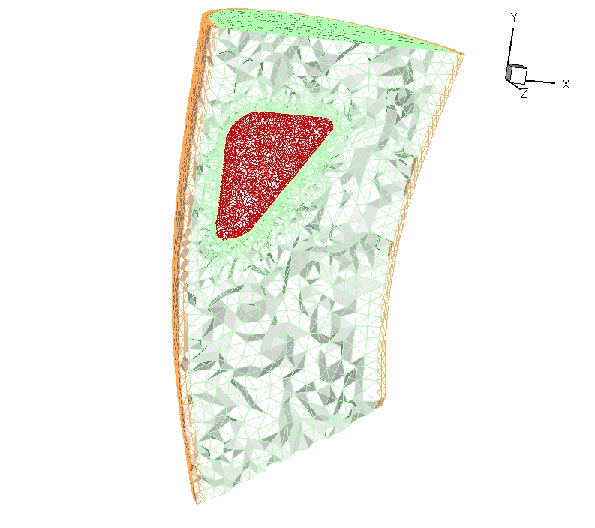
The materials properties are:
| organs | Density | Young modulus | Poisson coefficient |
|---|---|---|---|
| liver | 1500 kg/m^3 | 5 Mp | 0.3 |
| homogenuous torso | 950 kg/m^3 | 100 Mpa | 0.3 |
The solid mesh is composed of 19562 nodes while the fluid mesh is a 5-m cube with 100 cells in each direction (level 0).
An initial explosion of 0.5kg TNT occurs at 1.5m of the torso. This explosion is represented by a pressurizaed sphere at hot temperature.
- Initial condition: a hot pressurized sphere resulting from an explosion:
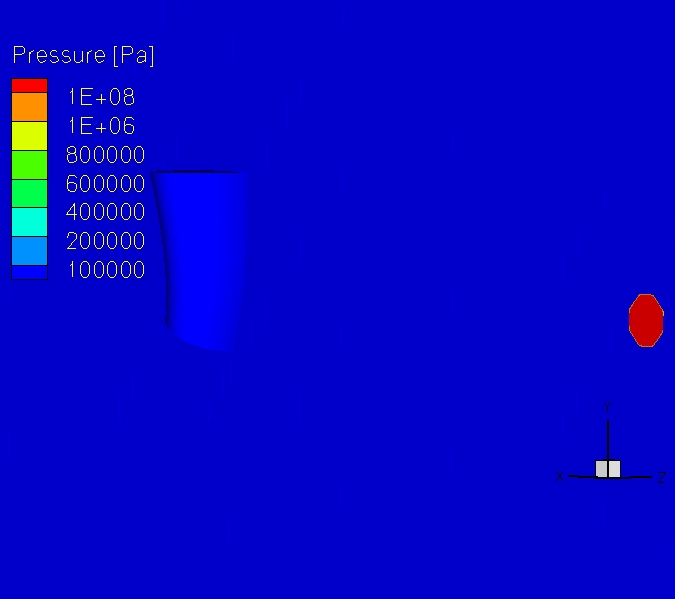
Simulation
The simulation ran on turing and took 10 hours on 20 processors (10 nodes with two 2GHz G5 processors by node, interconnected with high-bandwidth, low-latency Myrinet network) to compute 6ms of simulation.
The initial hot sphere leads to the creation of a shock wave that propagates to the torso:
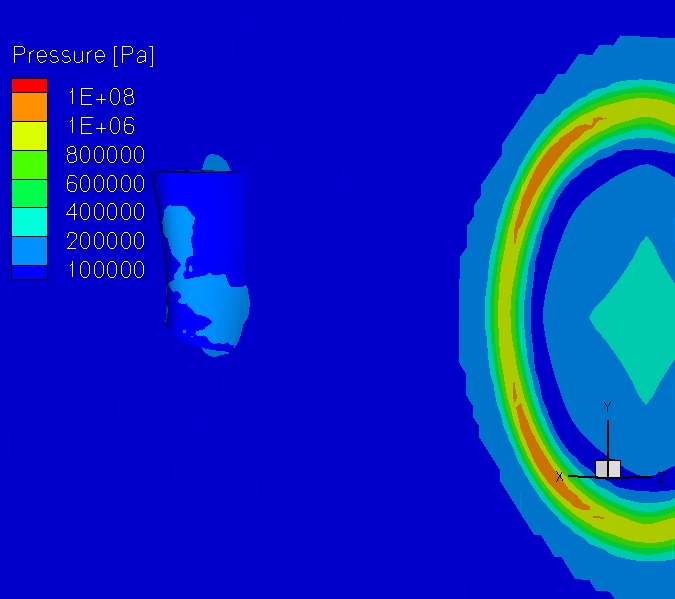 | 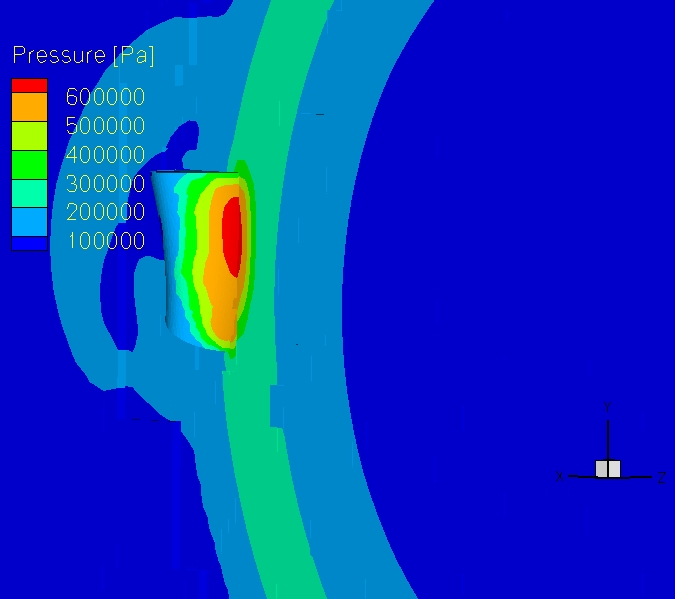 |
| Time=0.31ms | Time=1.55ms |
Due to the difference of impedance between the organs, the internal stress wave is reflected on the liver boundary, leading to a concentration of stress:
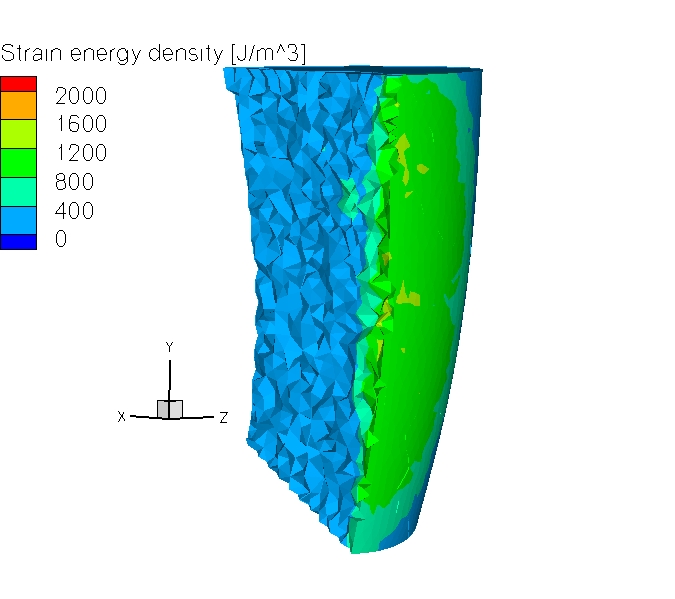 | 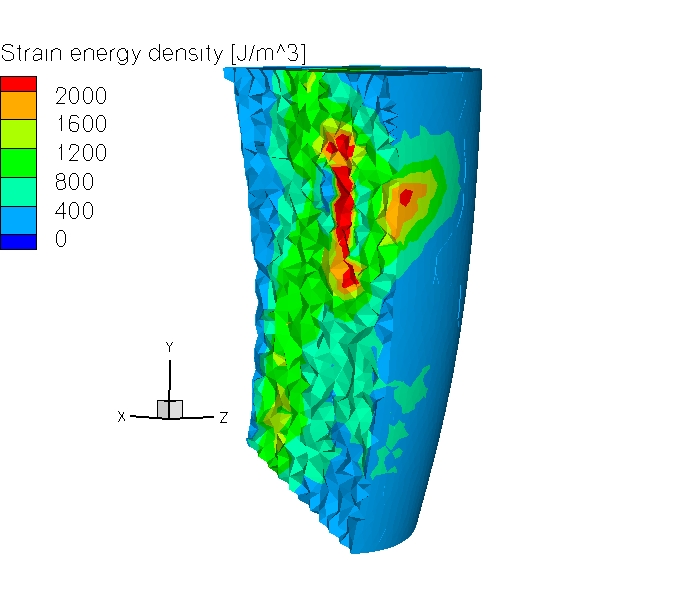 |
| Time=1.55 ms | Time=1.93 ms |
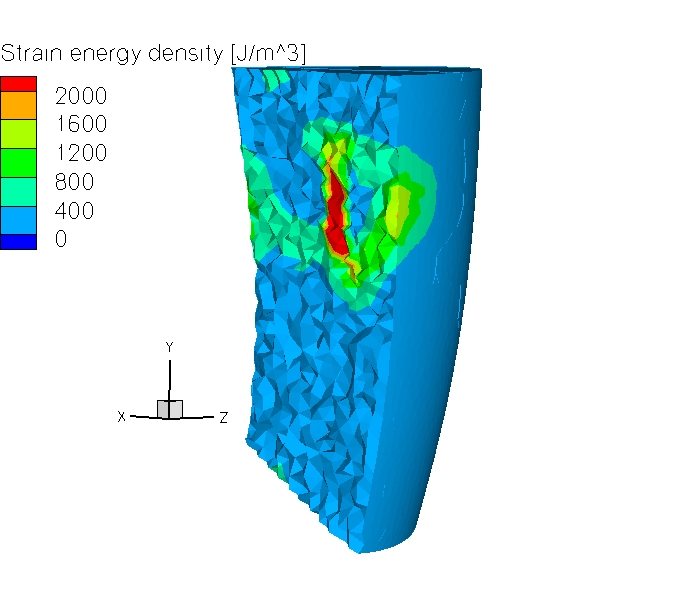 | 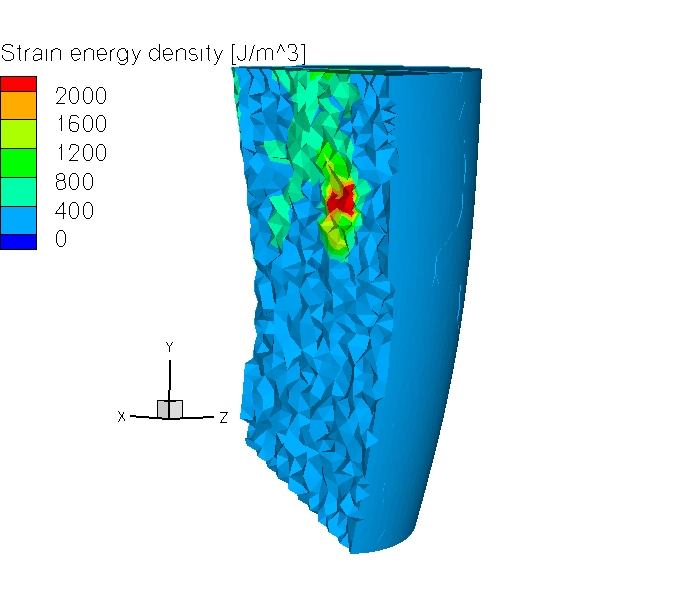 |
| Time=2.28 ms | Time=3.29 ms |
Let us point out the use of the AMR feature that reduces the computational time by refining the shock wave and the surrouding of the body:
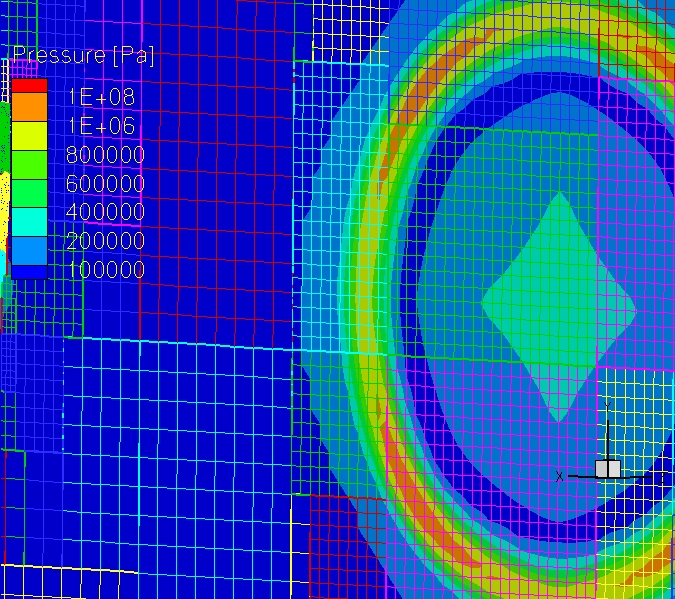 | 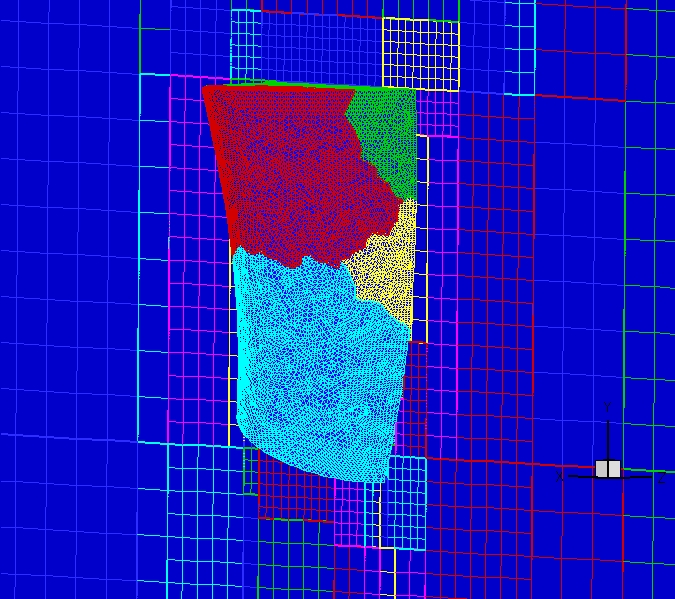 |
| Refinement around the shock wave. | Refinement around the solid. |
-- LudovicNoels - 17 Jul 2005
| I | Attachment  | Size | Date | Who | Comment |
|---|---|---|---|---|---|
| | export528.jpg | 99.8 K | 26 Aug 2005 - 21:53 | LudovicNoels | Reflection of the shock wave at time = 1.55 ms |
| | torsoLiver.mpg | 5273.2 K | 17 Jul 2005 - 21:46 | LudovicNoels | Blast torso interaction |
| | torsoInternal.mpg | 8184.1 K | 17 Jul 2005 - 21:53 | LudovicNoels | Internal reflection of the stress wave |